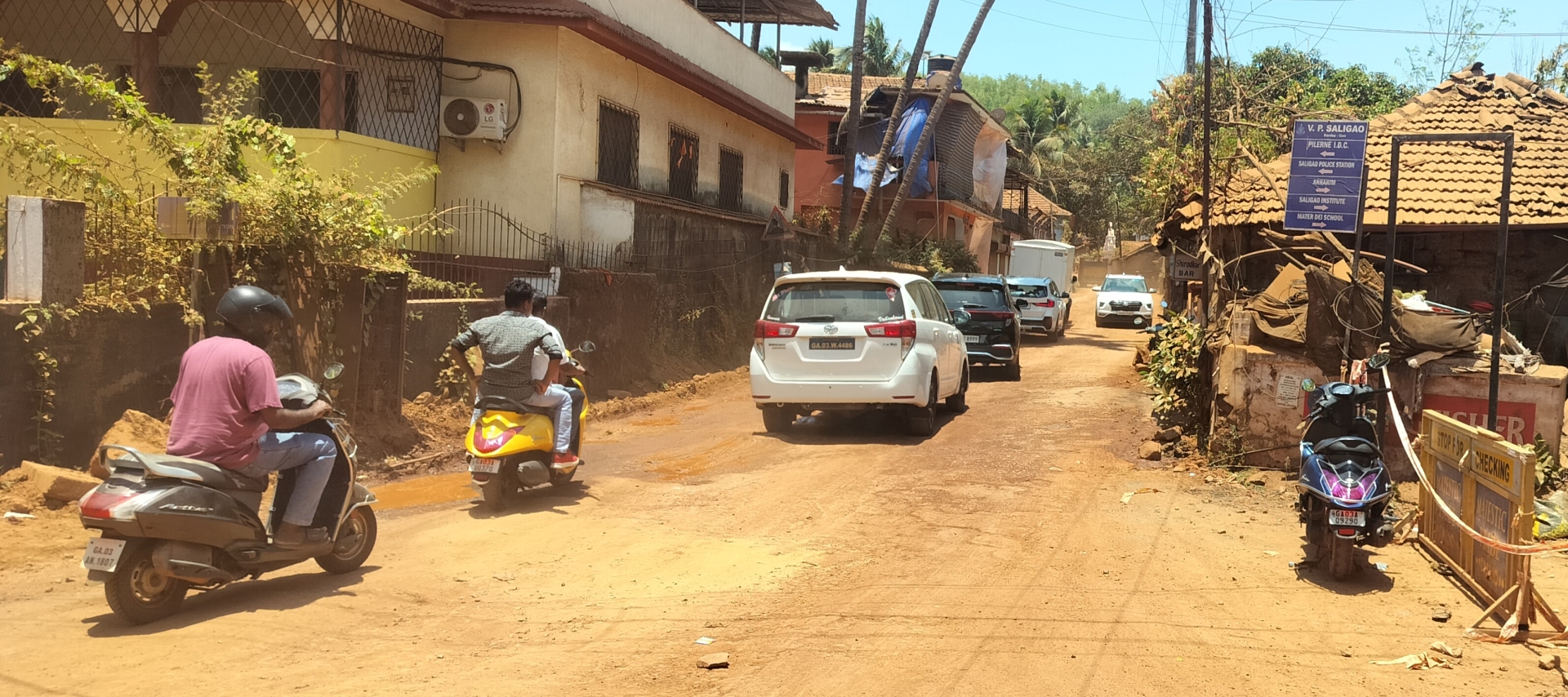Underground cabling, pipeline replacement works still underway across towns and cities

ROAD TO RUIN: The main Saligao road leading to the Pilerne industrial estate, dug up for underground power and water pipelines, remains in a terrible state with little hope of repair before the monsoon.
Photo Credits: Agnelo Pereira
PANAJI
As Goa stands just a fortnight away from the onset of the monsoon, the State’s road infrastructure is once again in shambles, with digging and developmental works continuing unchecked across key towns and cities.
From underground cabling to pipeline replacements, open trenches and half-finished works are an alarming sign that yet another season of potholes, waterlogging and commuter misery awaits.
Despite last year's public outcry and government assurances, the roads across major routes – from coastal connectors to residential arteries – are torn apart, with little hope of restoration before the skies open up.
Crucial routes in crisis
At Dream Circle in Arpora, a vital junction for tourists and locals heading toward the coastal belt, the road has been dug right through the middle.
The work, intended for laying a 33KV underground power line, began just over two weeks ago and shows no signs of nearing completion.
Local residents and commuters warn that once the rains arrive, this road will be nearly impassable.
Over in Saligao, the roads connecting to Pilerne industrial estate and the Saligao Church are also under excavation. Multiple departments are involved – laying underground electricity cables, replacing old water pipelines – but there’s no sign of coordinated action or urgency.
“The situation last year was horrendous. The roads turned to rubble and despite repeated complaints, nothing was done until much later,” says Sanil Mandrekar, a local shopkeeper near Saligao church.
History repeating itself
Last year’s monsoon wreaked havoc across the State, with countless roads turning into pothole-ridden danger zones.
Commuters were forced to navigate broken, flooded roads for months, leading to accidents, vehicle damage and mounting frustration.
Faced with public backlash, Chief Minister Pramod Sawant had issued firm directions post-monsoon for urgent road repairs and had specifically ordered patchwork to be completed ahead of major festivals like Chaturthi and Diwali. The Public Works Department (PWD) and road contractors were called to task.
Yet, as 2025’s rains approach, the same missteps seem to be playing out in slow motion.
Lack of coordination
Urban planning experts say the recurring problem lies in poor inter-departmental coordination and the absence of a regulatory cut off for road excavation projects.
“There should be a strict mandate that no road digging is allowed post mid-April. The monsoon calendar is predictable. What’s missing is administrative foresight,” says infrastructure consultant Ritesh Parab.
Critics argue that the government’s reluctance to enforce accountability is equally to blame.
“As per the District Collectors' directives, all road digging must cease by May 15 under normal circumstances. It is the responsibility of the Village Panchayats, through their ‘Amenities Committee', to monitor compliance. Unfortunately, many of these committees are inactive,” said Roland Martins, Coordinator of GOACAN.
“We urge consumers and road users to report any violations of these orders. The PWD App can be used to submit photographic evidence, making the complaints more effective,” he added.
Citizens demand a blueprint
With just days to go before heavy rains begin, the demand on the ground is for an immediate halt to all new road excavation and a fast-tracked repair plan.
“The administration must enforce a complete stop to digging after mid-April and shift focus entirely to repair and pre-monsoon safety works. This has to be institutionalised,” said an Arpora panch member on condition of anonymity.
The PWD, on its part, has offered no official response to inquiries about pre-monsoon readiness.
As clouds gather on the horizon, so does the specter of another chaotic, pothole-ridden monsoon in Goa.
With key roads still ripped open and no coordinated action in sight, commuters are left bracing for a repeat of last year’s nightmare – only this time, they’ve seen it coming.